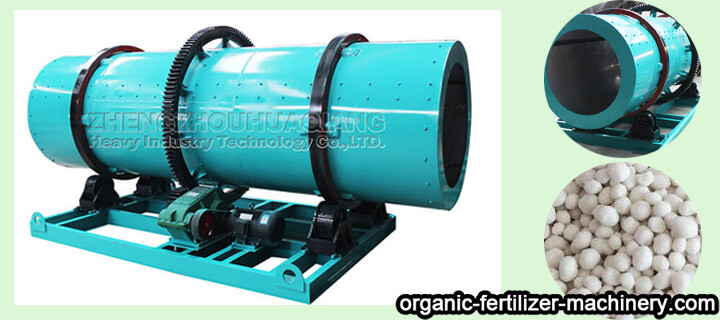Rotary drum granulator equipment is suitable for various manufacturing process such as organic fertilizer production and
NPK fertilizer production line, then what are its technical characteristics? Following by rotary drum granulator manufacturers are introduced as follows:
1. The granulation rate of the drum granulator is more than 90%, and when the fertilizer granules do not reach the prescribed size, they can also be re-entered into the machine for secondary processing through the recycling system of NPK fertilizer production line.
2. Rotary drum granulator can rotate the cylinder with less power. The outer part of the machine is made of wear-resistant steel, which effectively prolongs the use time of the equipment.
3. Rotary drum granulator is a special
fertilizer granulator machine which can make materials into particles through chemical reaction and rolling. Under the action of a certain liquid, the machine makes use of the rolling of the cylinder to form a sphere by squeezing between the material and the small particles.
4.
Rotary drum granulator is supported by the most power-saving idler and bracket. The bracket is made of high quality carbon steel, which can absolutely bear the weight of the cylinder. Considering the large friction between the cylinder and the bracket wheel, the special use of more wear-resistant materials in this part can not only improve the safety of the equipment, but also improve the stability.
5. The transmission device of the equipment is an important part to provide the main driving force for the machine. The rack is welded with professional and non-deformable high-quality channel steel, which makes the transmission device of the machine safer and more stable by driving the gear ring on the cylinder by the motor on the rack and the reducer.
6. The reducer of the granulator drives the belt by an electric motor. There is a pinion on the axle of the reducer, which coincides with the teeth on the gear ring outside the fuselage. The cylinder and the reducer move in opposite direction. The material is sent to the end of the cylinder by the silo or conveyor. The material is made into granular material in the cylinder, and the material conforming to the finished product is discharged from the other end. With the continuous operation of the machine, large-scale fertilizer production can be realized.
